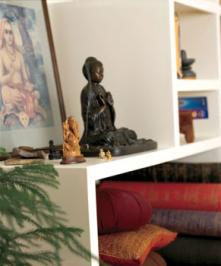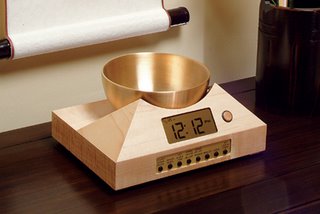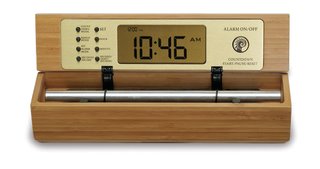
creating a meditation space in your home
• It doesn’t really matter where your meditation space is located in your house, although Rodney Yee says the Balinese consider the northeast corner culturally and religiously auspicious. Tias Little likes the southeast corner because it captures morning light for early meditation. Basically, says Yee, pick a space where you feel relaxed and comfortable. “I think everybody has a special little place where they go to be quiet—just like a cat that searches until it finds the right spot to sleep.”
• You can think big thoughts in any size space. Your meditation area can be as expansive as Richard Freeman’s, a room “at the very top of the house, encompassed by a big maple tree,” or simply a spare closet or an empty corner. Rainbeau Mars likes a window for fresh air as long as it’s not distracting, but Little says a semi-enclosed space can give a “really spectacular feeling, like a little womb.” You might consider creating a six- or seven-foot-square adobe “cell” addition to your house or yard.

meditation space
• “Anyone can use [a meditation space], but only for meditation,” Deepak Chopra says. Freeman says to minimize distraction, you should choose a location that’s as isolated as possible from the traffic flow in your house, and it shouldn’t be in an area where you’re more tempted to sleep than meditate. If you share your space, each person should have his or her own chair, cushion, zabuton mat, or zafu pillow, “something that sanctifies this is my space,” Mars says. Sit on it only when you meditate. That helps create a ritual conducive to meditation, Judith Hanson Lasater says. It is nice to have a special Zen Meditation Timer on a table beside your the chair or cushion that you meditate on. This way you can easily reach the meditation timer to turn it off when it chimes and then you can continue to sit in peace until ready to move.

Zen Timepiece, a brass singing bowl clock and timer
• Tatami mats or bare wood floors are a better, cleaner option than rugs or carpets, and they create a more spacious feeling, Little says.
• An altar is a good idea. “When you set it up, the space begins to get that special feeling,” Yee says. An altar makes it clear the space is reserved for meditation and serves as a repository for your sacred objects and decorations. It needn’t be elaborate: Little has seen window sills used as altars. Yee’s altar is a small, low table covered with a Balinese cloth; Freeman’s is a stone slab.
• If you do yoga in your meditation space, store props such as mats, blocks, and straps in a chest. Leaving them out creates distracting clutter.
• Avoid bright overhead lighting, or use a dimmer switch. Lamps or sconces are best because they combine illumination with warmth.
• Include a timer. Meditation is all about discipline and consistency, and meditating a set amount of time each day can help achieve that, Lasater says. The Zen Timepiece chimes gently at the end of one’s meditation without startling one back to the here and now.

Bamboo Zen Meditation Timer
• Even experts disagree on how to decorate your space. Most are minimalists. “It needs to be elegant in its simplicity and with very little clutter,” Chopra says. His recommended decorations include candles, books, and symbolic representations of archetypal figures such as gods, goddesses, angels, flowers, incense, and pastel colors. “You should not include anything that symbolically represents violence,” he adds. Yet not everyone finds minimalism calming, points out Freeman. “Some people display every saint they’ve ever heard of; some people may have only one. Others might light a candle; others prefer nothing. It’s whatever makes you want to sit there and do nothing.”
adapted from Natural Home Magazine, Jan/Feb 2005 by Vicky Uhland
Posted in Bamboo Chime Clocks, Japanese Inspired Zen Clocks, Meditation Timers, Meditation Tools, mindfulness practice, Well-being, Zen Timers